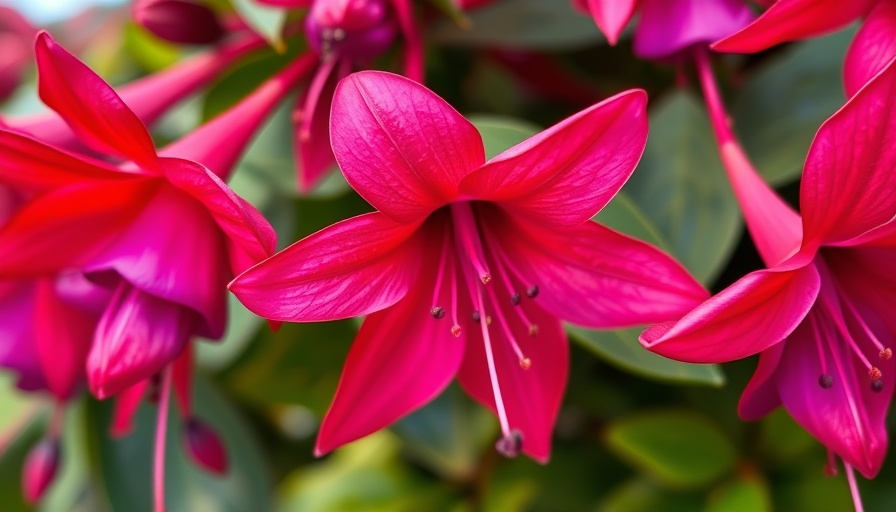
Unveiling the Charm of Fuchsia Flowers
Fuchsias are famous for their vibrant, dangling blossoms that create a breathtaking spectacle throughout the growing season. However, these gorgeous plants require a bit of effort and know-how to flourish to their fullest potential. Proper care, including the vital practice of deadheading, is key to keeping your fuchsias blooming beautifully.
Why Deadheading is Important for Fuchsias?
While fuchsia plants can drop their flowers naturally, deadheading plays a crucial role in maximizing flower production. Removing spent blossoms not only tidies up your plants but also encourages a prolonged display of those exquisite blooms. When a flower fades, the plant begins to focus on developing the seed pod; unfortunately, this often leads to a halt in flowering. Thus, by ensuring no flowers are left to form pods, you can keep your fuchsias bursting with color and vitality.
What’s interesting is that some fuchsia varieties will continue blooming even if you skip the deadheading. However, to be on the safe side—and ensure your plants look their best—removing faded flowers is always a good practice.
When Should You Deadhead Fuchsia? Timing is Key!
Timing is everything when it comes to deadheading. The right moment is when you notice wilted flowers starting to drop. Most fuchsias bloom from spring to summer, and the frequency of their blooms can vary by species. Some flowers may only last a few days, while others can remain vibrant longer.
Regular checking is a must. You'll want to inspect your plants daily during peak blooming. If flowers are falling to the ground too quickly, it’s a sign to take action. Dropping flowers often indicate they are past their prime, displaying signs like browning edges or soft petals, which signal their time has come.
A Step-by-Step Guide to Proper Deadheading
To successfully deadhead your fuchsias, you’ll need a pair of clean scissors or garden clippers. Here’s a simple step-by-step guide:
- Inspect: Look for flowers that are wilting or already fallen.
- Snip: Using your scissors, cut the flower stem right at the base, just above the leaf node.
- Clean: It's essential to clean your tools after each use with a 1:10 bleach-water solution to prevent any plant disease.
- Observe: After deadheading, pay attention to your fuchsias and see if the blooming increases.
Additional Plant Care Tips for a Thriving Fuchsia Garden
Besides deadheading, maintain optimal health for your fuchsias. Ensure they receive adequate sunlight—most require partial shade—and keep their soil well-drained. Regular feeding with organic fertilizers can enrich the soil nutrients, fostering even more robust growth and blooms.
Don’t forget to water properly! Fuchsias prefer consistently moist conditions, but make sure not to overwater, as soggy soil can lead to root rot. A good tip is to monitor the top inch of the soil; when it feels dry, it's time to water.
Conclusion: Cultivating Joy with Your Fuchsias
Taking the time to deadhead your fuchsias and care for them will ultimately reward you with continuous, gorgeous blooms that elevate your garden’s aesthetic. The effort you put into garden maintenance reflects not only in the health of your plants but also in the joy they bring to your space.
So grab your scissors and start deadheading those fuchsias! You'll find that these simple gardening tips will not only make your flowers thrive but also enhance your gardening journey.
 Add Row
Add Row  Add
Add 




Write A Comment